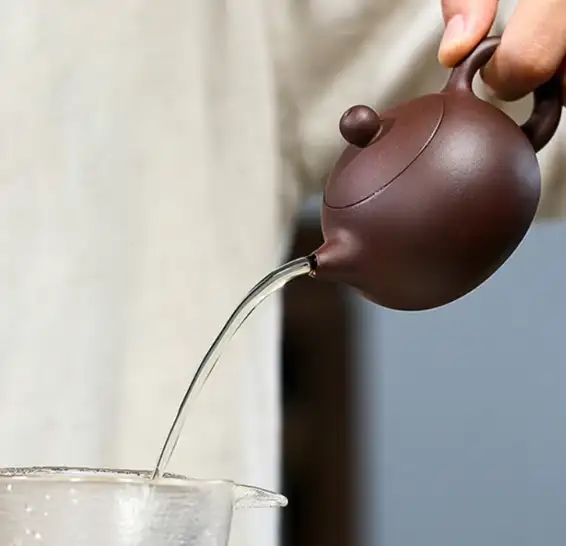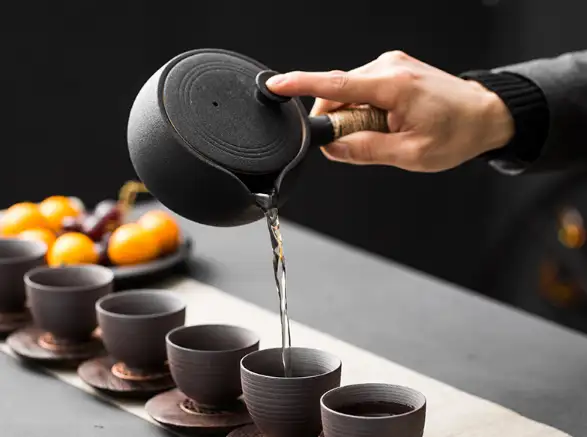Cooking is more than just preparing meals—it’s about nurturing your family with love and care. But have you ever thought about the safety of the cookware you use every day? For health-conscious moms looking to eliminate toxins and boost their family’s well-being, clay pots might just be the perfect solution. Let’s dive into what makes clay pots a safe, eco-friendly, and versatile choice for your kitchen.
What is Clayware?
Clay cookware, often referred to as clayware, is a traditional cooking vessel made from natural clay. This type of cookware has been cherished for centuries across various cultures, including those in India, Mexico, and the Mediterranean region. Its enduring popularity stems from its ability to enhance food’s flavor and retain nutritional value through its unique cooking properties.
What Makes Clay Pots Safe?
1. Natural, Non-Toxic Material
Clay pots are made from natural, unglazed clay, free from harmful chemicals like perfluorocarbons (PFCs) found in many non-stick pans. PFCs have been linked to health issues like liver damage and developmental concerns, making clay pots a toxin-free alternative. Always look for unglazed or lead-free glazed pots to ensure the highest safety standards.
2. Even Heat Distribution
The porous nature of clay allows heat and moisture to circulate evenly, preventing food from burning and ensuring every bite is perfectly cooked. This unique property not only enhances flavors but also helps retain nutrients that might otherwise be lost with conventional cookware.
3. Eco-Friendly and Sustainable
Unlike non-stick pans that contribute to environmental pollution, clay pots are biodegradable and earth-friendly. They are an excellent choice for moms seeking sustainable cooking solutions.
Benefits of Cooking with Clay Pots

1. Enhanced Flavor and Aroma
Cooking in clay pots locks in moisture and natural oils, resulting in food that is juicier and more flavorful. The slow evaporation process also seals in nutrients, giving your family meals that are as healthy as they are delicious.
2. Versatile and Adaptable
From stews and roasts to baked goods and even grilling, clay pots can handle it all. They work well on stovetops, in ovens, and on grills, making them a versatile addition to any modern kitchen.
3. Aesthetic Appeal
Clay pots bring a rustic charm to your kitchen. They can double as beautiful serving dishes, adding a touch of elegance to family dinners or gatherings.
Cautions and Care for Clay Pots
While clay pots are safe and beneficial, proper care is essential to ensure they last for years:
- Avoid Sudden Temperature Changes
Rapid shifts from hot to cold can crack clay pots. Start cooking at a low temperature and gradually increase it. - Pre-Soak Before Use
Before cooking, soak your pot in water for 15–30 minutes. This step prevents cracking and ensures even cooking. - Use Only for Specific Cooking Styles
Avoid deep-frying in clay pots, as they aren’t designed to handle extreme oil temperatures. - Select Quality Products
Choose pots labeled as lead-free or certified food-safe to avoid exposure to harmful glazes.
How to Incorporate Clay Pots into Your Cooking Routine
1. Start with Simple Recipes
Begin with familiar dishes like soups, stews, or casseroles. You’ll quickly notice the enhanced flavor and texture.
2. Experiment with Regional Specialties
Explore dishes like Moroccan tagines, Indian curries, or Mexican bean stews that traditionally use clay cookware for an authentic taste.
3. Serve Directly from the Pot
Use your clay pot as a serving dish to add a warm, rustic touch to your dining table.
Characteristics of Clay Cookware
Clay cookware is typically unglazed and porous, allowing for the circulation of steam and heat during cooking. This promotes:
- Moisture Retention: Helps keep food tender and juicy, particularly for slow-cooked dishes.
- Enhanced Flavor: Porous clay absorbs and releases flavors, adding depth to the dish.
- Even Heat Distribution: Prevents hotspots and ensures uniform cooking, which is especially beneficial for dishes like curries, stews, and soups.
Common Types of Clay Cookware
- Clay Pots: Used for slow-cooking stews, soups, and curries. These pots retain moisture effectively and are ideal for recipes that require tenderizing ingredients over low heat.
- Tagines: These Moroccan clay pots, recognizable by their conical lids, are perfect for cooking flavorful meat and vegetable dishes.
- Cazuelas: Widely used in Spain and Latin America, cazuelas are shallow clay pans suitable for making rice, beans, and casseroles.
- Tandoors: Traditional clay ovens used for baking bread, grilling meats, and even making desserts like kulfi.
Is It Safe to Cook in Clay Pots?
Yes, clay cookware is generally safe and even considered healthier for cooking when it is properly made and used correctly. To ensure safety:
- Choose High-Quality Clay: Ensure the clay comes from reputable sources, free from contaminants.
- Opt for Unglazed Clayware: Glazed clay cookware might contain harmful chemicals or lead unless certified as food-safe.
- Cure Your Clayware: Season the clay pot before use by soaking and lightly oiling it, which enhances durability and prevents cracking.
Why Choose Clay Cookware for Everyday Cooking?
- Health Benefits: Cooking in clay pots preserves nutrients and avoids exposure to synthetic materials found in some modern cookware.
- Eco-Friendly: Made from natural materials, clay cookware has a lower environmental impact.
- Versatility: Clayware suits a range of cooking techniques, from slow simmering to baking.
Clay cookware not only connects us with centuries of culinary tradition but also adds a unique charm to modern kitchens. Whether you’re preparing a Moroccan tagine or a comforting bowl of soup, clayware elevates both the flavor and experience of cooking.
Conclusion: The Safer, Healthier Choice for Your Family
So, are clay pots safe? Absolutely. They’re not just cookware; they’re a gateway to healthier, more flavorful meals. With proper care and maintenance, clay pots can elevate your cooking experience and become a cherished part of your kitchen.
Ready to make the switch? Start your journey into toxin-free, nutrient-rich cooking with a beautiful clay pot. Your family—and your health—will thank you for it.
Recommended Products to Get Started
- Boutique Purple Clay Teapots
Perfect for everyday cooking with a focus on safety and flavor. - Eco-Friendly Japanese Clay Pot
Includes clay cookware and other sustainable kitchen essentials.
Explore the joys of clay pot cooking today and redefine the way you nurture your family. Cooking healthy has never been this rewarding—or delicious

